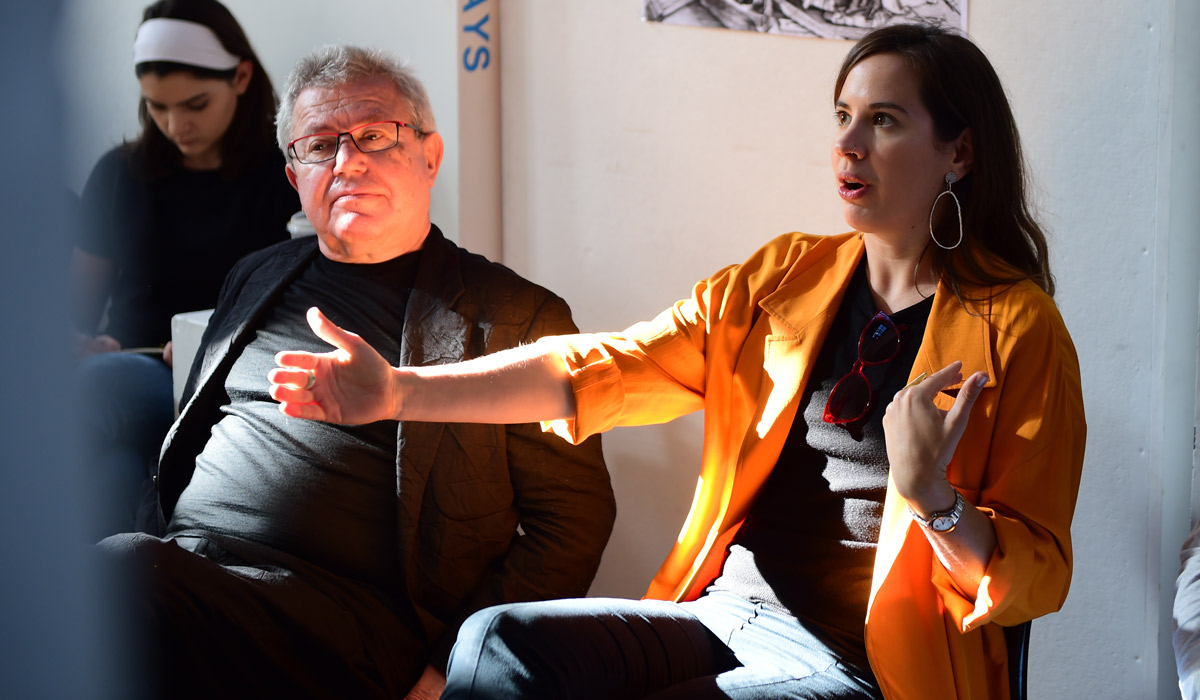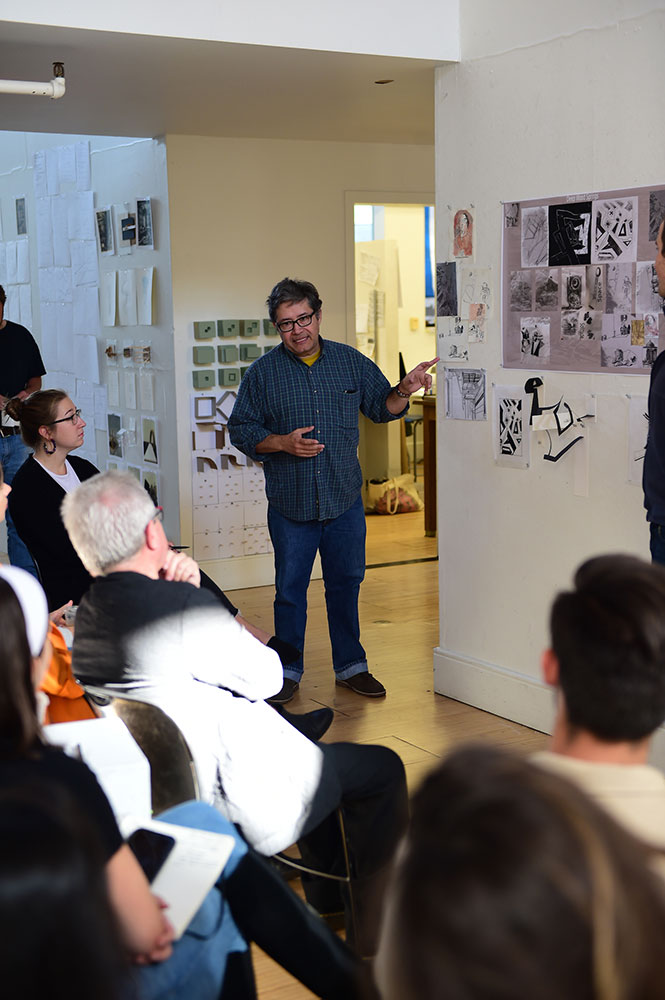

Architecture students in the sacred space concentration had a unique chance to receive feedback from one of the world’s leading architects this fall.
Daniel Libeskind, architect of the World Trade Center master plan and the Jewish Museum in Berlin, spent several days on campus working directly with students as the 2019 Walton Critic and delivering a lecture as part of the school’s fall lecture series. In 2009, the Polish-American architect received the Incontro Con Gli Artisti award from Pope Benedict XVI, a special recognition for expressing faith through art.
“Without exaggeration, this is a once-in-a-lifetime opportunity for a student,” said Julio Bermudez, professor and director of the Cultural Studies and Sacred Space program. “Libeskind is one of the most recognized architects in the world today.”
As part of Libeskind’s visit, Bermudez’s students were asked to engage in “architectural meditation.” They reviewed specific pieces of art, poetry, and music, and prepared drawings, designs, and models to reflect the intersections and relationships they discovered. They had two days to prepare for a design charrette where they presented their meditations to Libeskind.
“Some people spend all their lives in this profession and never have an opportunity like this,” said graduate student Cesar Chirinos-Garcia.
After Chirinos-Garcia and his partner presented, Libeskind told the students, “I’m always interested in the gap between your words and the design object. In architecture, you’re not there to explain it. Architecture is just ... in space and it’s public. There’s no one to say something about what it is.”
Throughout his feedback, Libeskind called on concepts from philosophy and theology and invited the students to reflect on how they related to their “creations” in architecture. “You are making something,” he said. “Make it the best possible model.”
“Where I only see mist, he sees it built,” said Chirinos-Garcia. Libeskind told him after his presentation that he could see the building that is coming, and encouraged the student to look for architectural masters to study.

Although Chirinos-Garcia referred to working with Libeskind as a “gift” and a “blessing,” he was not particularly intimidated by the industry leader. “I felt invited to share my experiences and my views with another human being as interested in knowledge as I am,” he said. Thanks to the guidance of Professor Bermudez ahead of the design charrette, Chirinos-Garcia said he felt prepared for the visit.
Bermudez says he was able to convince the architect to visit campus because of the track record of prior Walton Critics — Alberto Campo Baeza, Juhani Pallasmaa, and Eliana Bormida — and the emphasis on meaning and spirituality in the program.
Working so closely with renowned practitioners is only available at some Ivy League schools, Bermudez says. But he believes the way the program addresses human flourishing as it relates to culture and spirituality “is truly unique to Catholic University.”
“With Libeskind, I learned that an architect must have freedom to explore every single form in the infinite repository of the subconscious, but the real challenge resides in being able to express it in the correct architectural language; one that being faithful to the initial vision, respects the order and rules of architecture,” Chirinos-Garcia said. “That is hard to achieve, and great discipline and work must be employed to that end.”
The visit of architect Daniel Libeskind was made possible by the Clarence Walton Fund for Catholic Architecture. Learn more about previous Walton Critics in this story on their 10th year.